Pyre Review
A great looking title with truly original gameplay
Religion has long been part of American athletics - football players will take a knee after scoring touchdowns, baseball players point to the heavens after hitting home runs, and the iconography of Christianity is often worn around the necks of players from multiples sports. Yet, few people have attempted to explore the relationship between religion and athletics. Enter Supergiant Games' Pyre, a strategy game that takes a fictional sport and uses it to explore ritual, religion, freedom, and sacrifice. In the capable hands of this independent development team, the unique title hits more often than it misses, and it has definitely changed the way I think about sports.
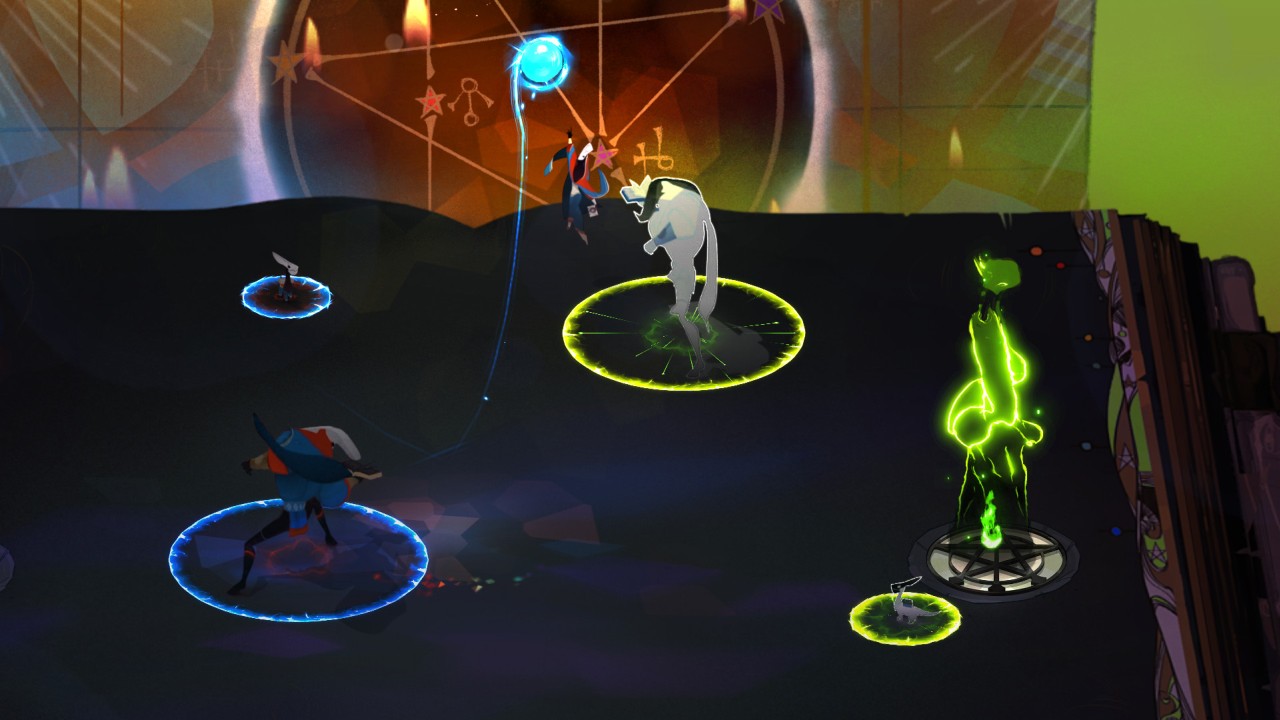
While the words “unique gameplay” are thrown around a lot, it’s rare that developers are actually inventing a new type of game. Usually the mechanics and systems are easily described by a tradition of what came before them. Even something like Supergiant’s previous effort Transistor felt somewhat familiar in terms of its mechanics. But Pyre is an invented sport, like Blood Bowl or Quidditch - something riffing on familiar sports motifs, but new nonetheless. In a match, two teams of three compete to extinguish each other’s pyre. To do this, one team must carry the Celestial Orb (a ball) and toss it, slam it, or carry it into the opposing team’s pyre (a large, ceremonial fire). Depending on how you put the ball in your opponent’s pyre a certain amount of points are deducted (usually both teams start with 100 points) - once one team’s pyre reaches “0”, the match is ended and that team loses.
Of course there are additional rules, which are worth listing. Only one player on each team of three can move at a time, and if your team has the ball only the player carrying the ball can move. Each player has an aura around them that cannot be touched, if a player crosses into another player’s aura they are banished from the field of play for a few seconds. The player carrying the ball doesn’t have an aura and cannot shoot their aura. Auras can be shot at players in a straight line, detonated like an exploding bomb, or dragged behind the player leaving a trail. Different types of players each have their own special aura attacks that they can use to banish opposing players. Lastly, after running or slamming the ball into your opponent’s pyre that player is banished for a full round. If they toss the ball in, they may remain on the field.
Hopefully all of these rules haven’t overwhelmed you and you can kind of see how strategies might work. Ostensibly, it is a game of cat and mouse, one team has the ball and the other team is trying to banish the player with the ball by hitting them with their aura. You can try to get close to the ball-carrier and banish them by hitting them with the aura surrounding you, or you can try to shoot your aura at them and banish them that way. The act of doing this all feels great, avoiding enemies is a thrill and banishing them is satisfying - though jumping in the pyre can be difficult due to the camera angle.
But there are deeper strategies that quickly become apparent. The celestial orb drops into the center of the field at the beginning of each round, so maybe you’ll try to move your team up, one at a time, without picking up the orb to try and secure some ground. Maybe you’ll attempt to banish the entire other team before trying to possess the ball. Or you could try to use one of the faster characters, get the orb before anyone else has a chance and sneak through their defenses, aggressively playing for quick points. The best thing about Pyre is that all of these strategies are valid and all of them have their merits. Whether I was playing against the computer or friends, strategies would always naturally differ as one team tried to outsmart the other.
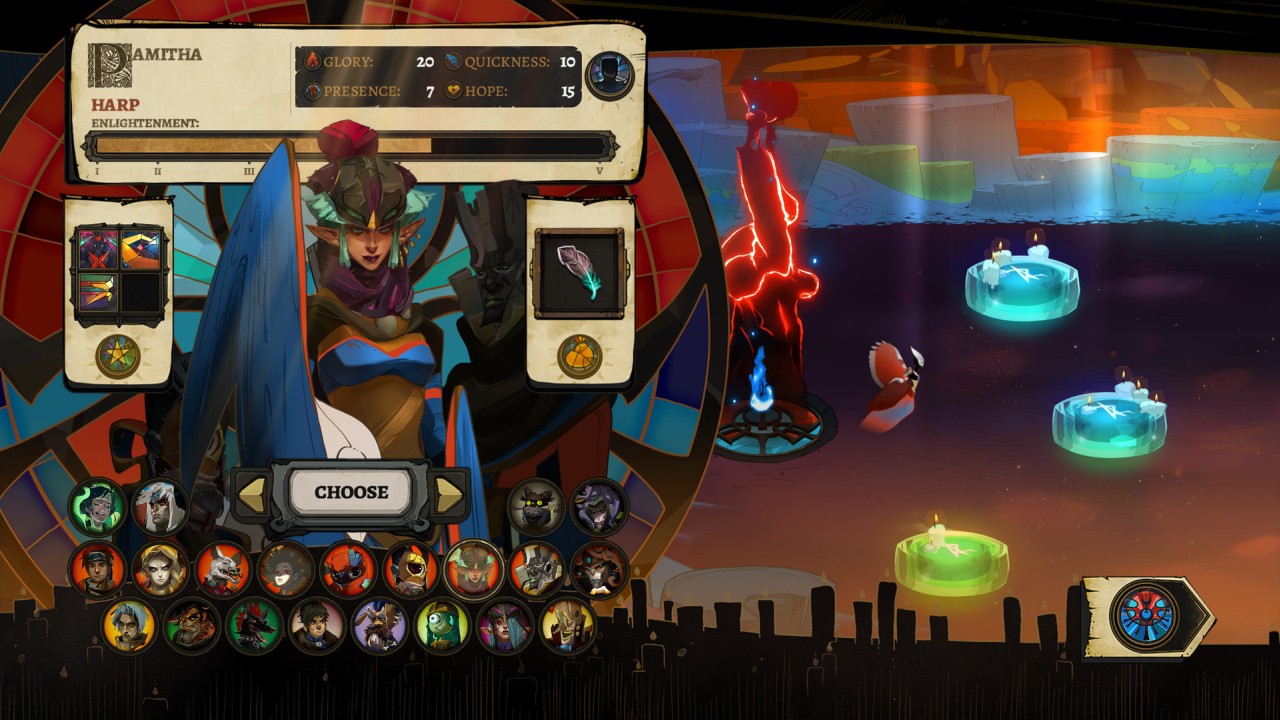
Supergiant seems to have almost accidentally created a strategy sports game that is like a more intensely focused version of real-time Blood Bowl. The only problem is that the title is in no way equipped to fully explore the competitive multiplayer experience that is begging to be had. I would love to have spent evenings engaged in the multiplayer of Pyre the same way you can with games like Rocket League or Blood Bowl, but Pyre doesn’t have online multiplayer.
However, there is a local multiplayer mode, which also allows you to play one-off matches against the computer. In the few hours I was able to get some friends together to play this mode, it only made me all the more saddened that there wasn’t the ability to play the game online. Matches versus my friends were exciting and creative, the mechanics of the game allow for player expression through their use of the characters and exploitation of the rules. Watching my friends cry out in triumph or frustration was a blast, as the unique rulesets allow those who have never had an interest in traditional sports feel the excitement of a narrow victory and the crushing sense of defeat.
That being said, the single player version of Pyre has plenty of those moments to offer as well, but the experience is a bit mixed. Players assume the role of an exile of the Commonwealth, an empire that rules almost the entire world and who use the harsh world called Downside as a prison colony for those who have disobeyed their laws. The player character has been cast into Downside for reading, a capital offense in the Commonwealth - where literacy is banned.
Almost immediately, the player is discovered by a trio of exiles who have been waiting for a Reader. In Downside, Readers are important because they are the necessary to perform the Rite, the ritual that allows exiles to engage in the fictional sport that is the core of Pyre’s gameplay. Readers act as a head coach for the exiles in a Rite, guiding them during play and teaching them outside of the game.
Quickly the trio reveal that they are working for a man named Sandalwood who sent them to find a Reader and gather a small group of exiles to compete in the Rite and earn their freedom. So the exiles travel the Downside, stopping in at stores to buy special trinkets to improve their stats, learning specials skills in the lite-RPG leveling system. At first, the campaign feels like it will just be series of matches as you spend time wandering the Downside, proceeding after you’ve beaten another team like in older sports games, starting with the worst to advance to the championship. However, it’s pretty obvious that if everything was that simple, Pyre wouldn’t need so much lore, dialogue, and world-building. To avoid any spoilers I’ll just say that things don’t go according to plan, but soon you find yourself competing in a season mode, playing matches against other teams while your wins, losses, and other statistics are kept in a giant tome.
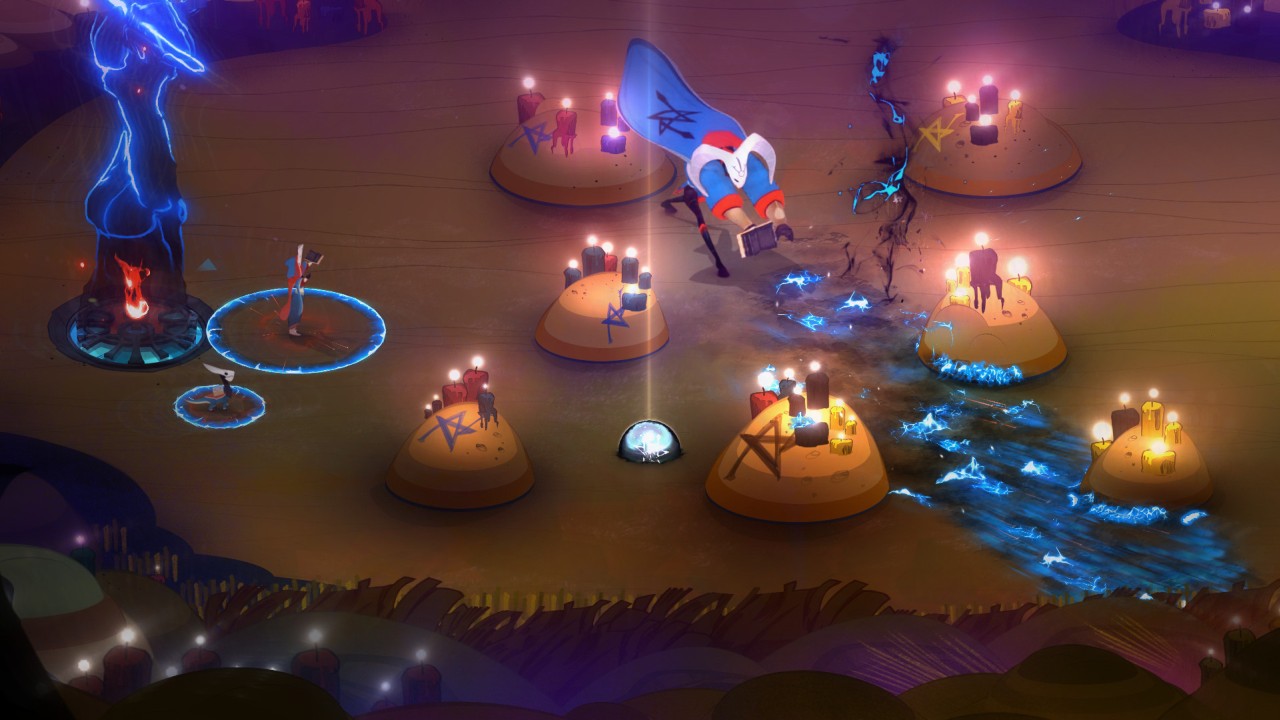
The narrative, like I said earlier, is mixed. If the team's last effort, Transistor, felt a little overdeveloped, Pyre is largely underdeveloped, as if after figuring out the core gameplay, Supergiant weren’t entirely sure what to do with it. Pyre spends a little too much time trying to get players invested in their fantasy world. Narratively, it makes sense, though explaining why would get into spoilers, but reading through pages of lore and sitting through endless dialogues about the political motivations and history of the world can be tedious - especially when all you want to do is just play another game of mystical basketball because it’s so much fun. It’s the equivalent to having to come back inside after recess and listen to a teacher drone on about history, meanwhile looking out the window and staring at the cement basketball court, which is begging to be played on.
Part of the problem is the pacing. The first three to four hours of the game is basically an overly long tutorial, and insultingly easy. The lengthy introduction is somewhat necessary as it forces players to become acquainted with the large roster of characters, the dense world, and the equally dense lore, but I almost wish the game would have made itself a little more brutal in the beginning, since the story will progress whether you win or lose.
On the other hand, the characters, both those on your team and those you compete against, are fleshed out and reveal some great depth - each one with their own backstory about how they became an exile and why they want their freedom. Because the game takes so much time exploring these characters, it’s easy to become greatly invested in late-game matches. You’ll hate losing to certain characters and regret beating others, the effect of this is amplified as Pyre doesn’t have a “game over” screen that would allow you to replay matches. When you lose, you lose, and losing can be terribly painful in Pyre thanks to the game’s high stakes and great characters.
These characters are pulled from a variety of different races, all of which have their own set of skills. Giant demons have a massive aura, move slowly, but can pounce on opponents. Imps quickly hop around the field, can fly over enemy auras, and explode themselves in a blast of aura that banishes all within range. From humans to harpies, treepeople to bog creatures, there’s a handful of races who each have their own abilities that lend themselves to your strategy.
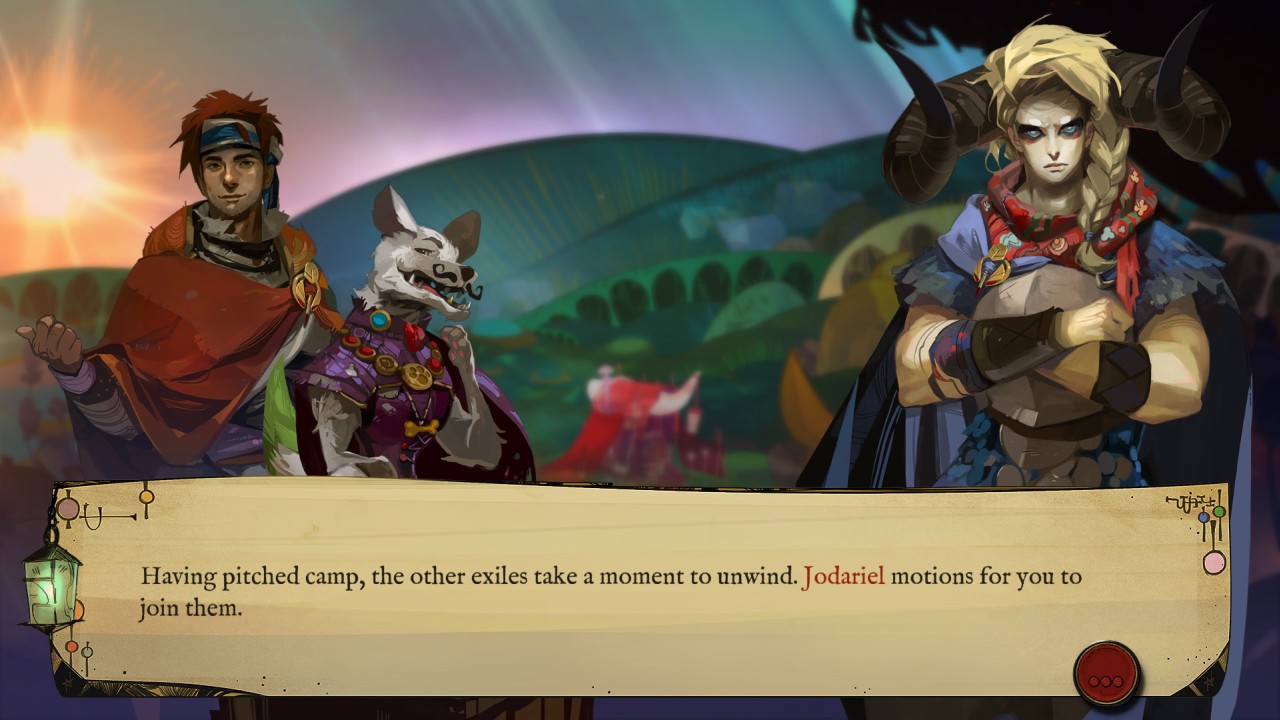
Initially you start out with three characters, each of a different race, but through the tutorial you pick up other characters of varying races to assist you. Eventually, if you win enough, certain characters can earn their freedom and leave your team, but you’ll want to be careful about who you lose because characters slowly level up throughout the game, so losing your star harpy might leave you at a disadvantage while you level up the rest of your party.
Eventually, Supergiant introduces a difficulty system that is close to Transistor, where you can add elements to make the game more difficult (like starting with fewer points or boosting enemy stats) in exchange for more experience. The system works a little better here because late-game additions to your roster will greatly benefit from the extra experience. However, right when the game adds the ability to up the difficulty by choice, it also starts just upping the difficulty naturally. This means that instead of rolling enemies, like you did in the opening hours, you might get blown out because you turned on too many difficulty modifiers while trying to find the balance. It probably took me about half of Pyre’s ten hours to strike the right balance. And once I found it, the game was thrilling fun. The final match I played was a nail-bitter, where I pulled off a daring come-from-behind win that had me screaming with excitement.
It helps that Pyre’s production is top notch. The art style of Jen Zee features the same playfulness and complexity as Supergiant’s previous efforts, but I sensed some influence from The Banner Saga and JRPG character animations, which add to a visually pleasing aesthetic that avoids feeling cliché. And Darren Korb delivers another score that effortlessly blends folksy minstrel ballads with electronic rhythms, making Pyre feel ancient and modern at the same time. It’s a similar effort to what Korb did with Bastion, but there’s a lot more variety in Pyre, with each character getting their own theme. Lastly, Logan Cunningham also deserves to be called out for his performance as The Voice. While playing the game with my friends we debated whether or not it was Cunningham in the role, as the character sounds nothing like his work in Bastion or Transistor. The man it truly a vocal chameleon.
Technically, Pyre is a pretty solid effort, but it has some drawbacks. I noticed a few framerate drops while playing multiplayer. There is an arena where you can push barriers around on ice and that map specifically seemed to be an issue. There are also a lot of loading screens, and while they’re not overly long, they are annoying.
I feel bad that I’ve only been able to skim the thematic elements of Pyre, but part of that would be, again, getting into spoilers. The game has much to say on freedom, asking questions about why the exiles want to earn their way back to the Commonwealth and examining why the Rite is instrumental in their return. It draws comparisons between the fastidious practices of religion and the rules of athletics, daring one to explain what separates the two. The game also talks a lot about sacrifice and what it means to be part of a team and a community - asking questions of the player and comparing their actions with those of their opponents.
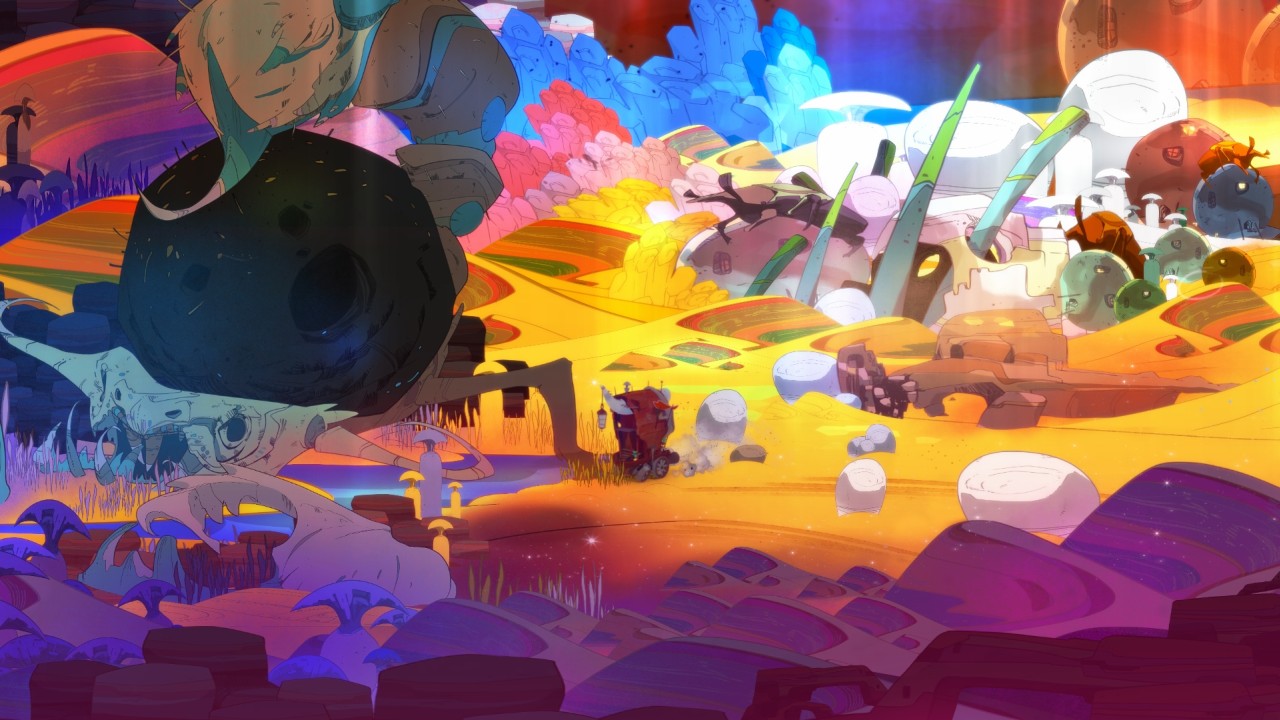
And so while the overall impressions of the game are rather positive, a few issues keep Pyre from greatness. Its pacing is sloppy, the difficulty balance is all over the map early, and it likes to drone on with tedious exposition. I do think these elements hold it back from being a truly great game and fulfilling its lofty goals. Still, one has to admire everything that Supergiant has poured into the experience. It asks so many interesting questions of the player all while inventing gameplay mechanics and fast-paced action that I think some long-running sports franchises would be jealous of. If the faults of Pyre are the price one has to pay to get a game this interesting, I would gladly make that deal every time.
 Comments
Comments


















